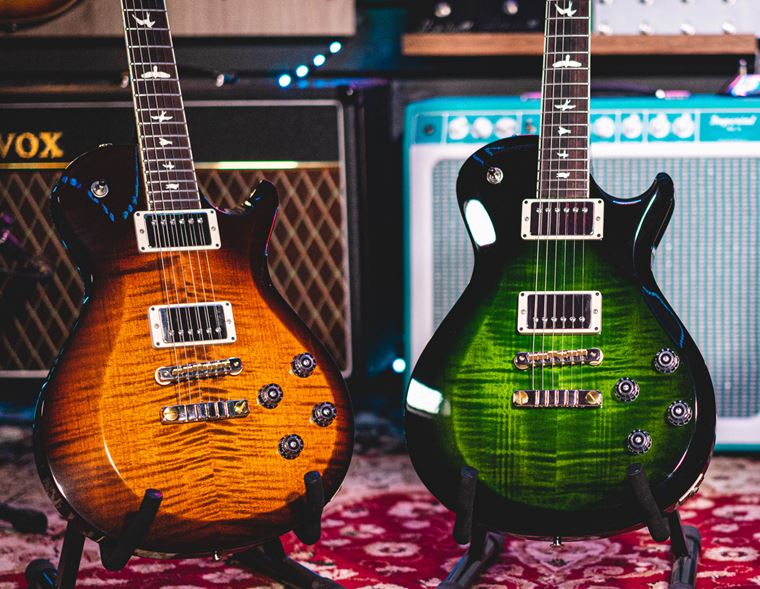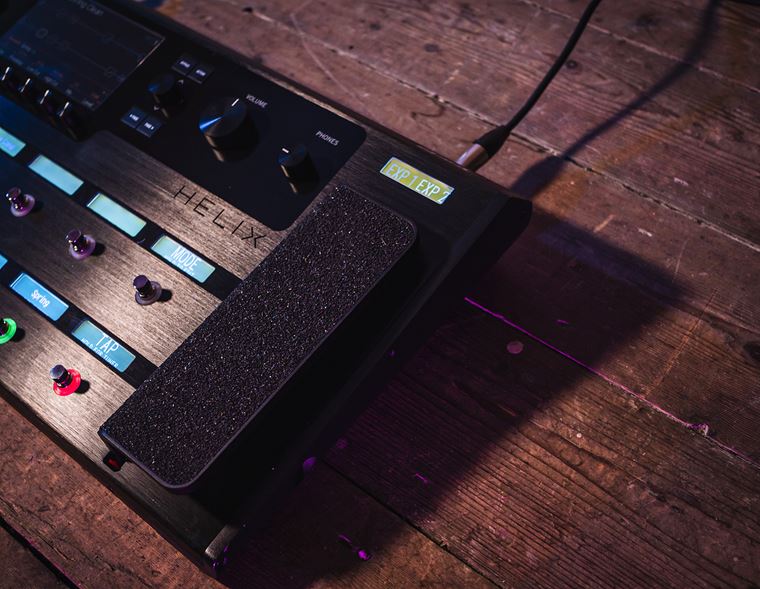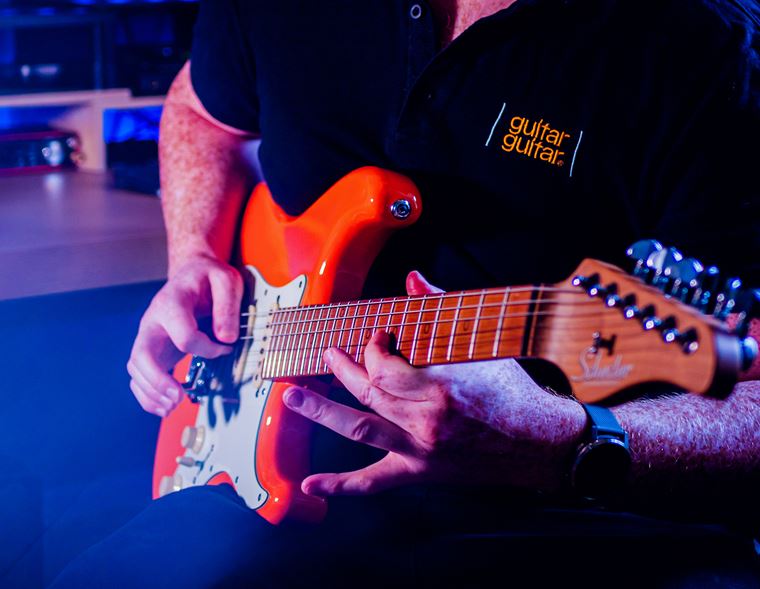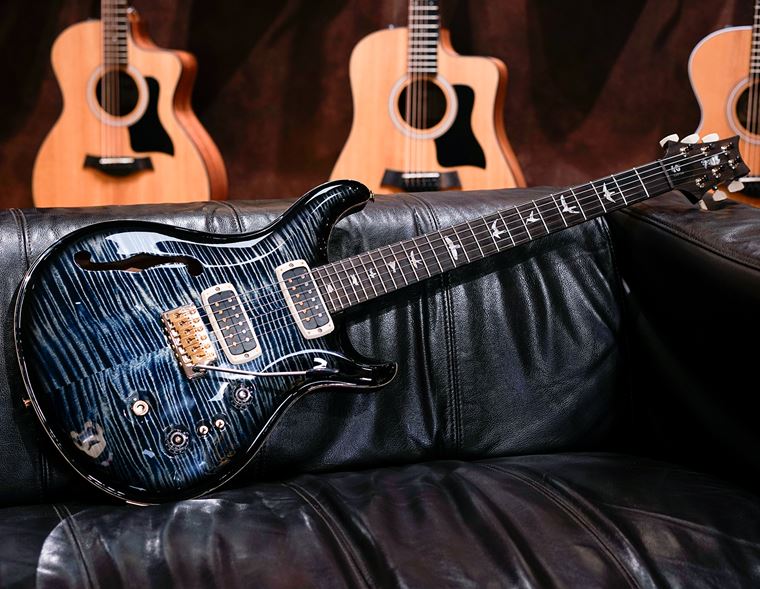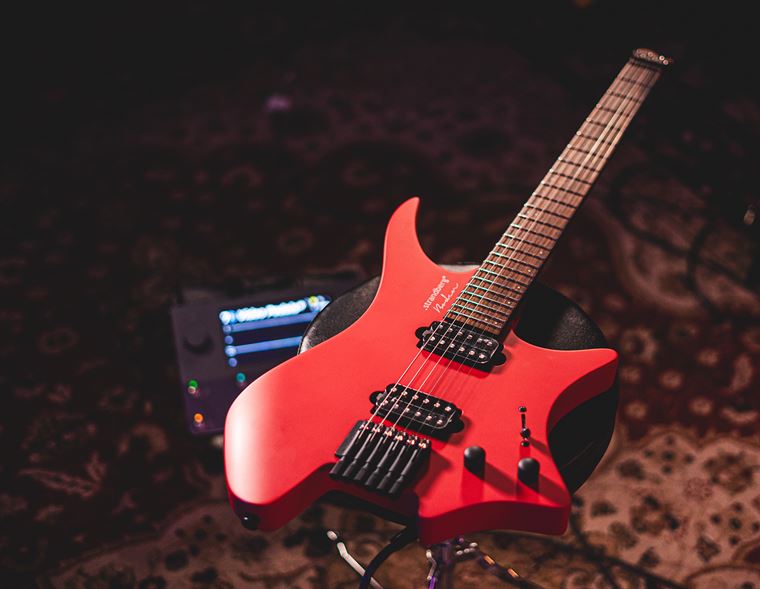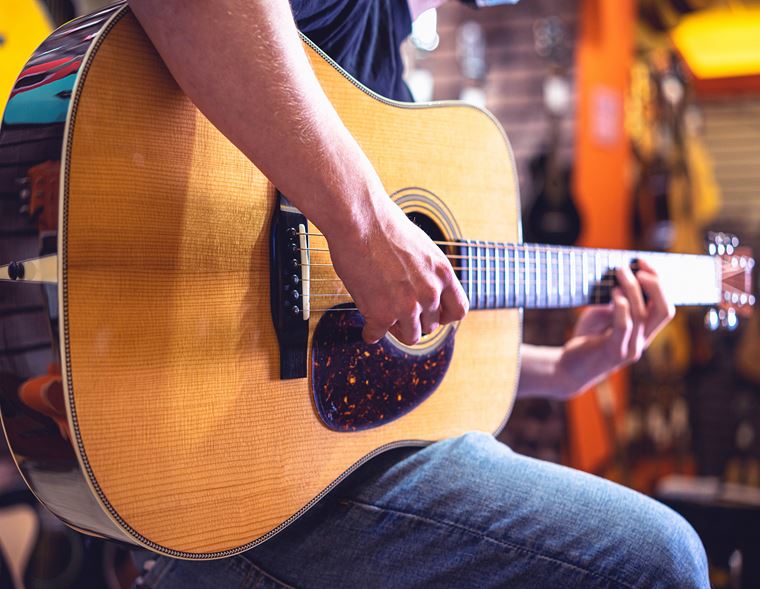The Best Guitars for Every Genre (Updated for February 2025)
Can you use a guitar for any genre?
Which guitar can play all genres? Which genres are Strats best for?
These are just some of the questions we regularly hear both in our stores and via our social media channels, and they are all good, valid queries!
As guitar players, we do tend to get ourselves all caught up in the notion of genre, and by extension, which guitars are suitable for playing those genres. For reasons of association, fashion and maybe even learned behaviour, we tend to think of certain electric guitar models as being more suitable for particular styles than others.
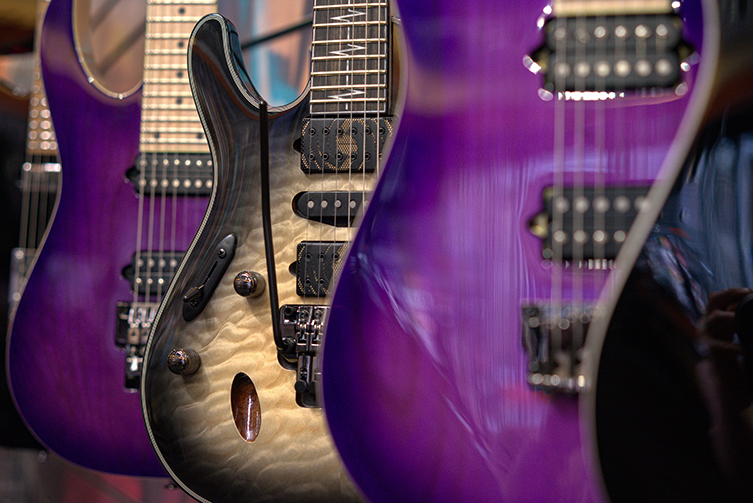
But is this true? Can we, in fact, play any and every genre on one guitar, or is that a fundamental mistake? We’ll explore this question as we go along, but we’d definitely say that various truths lie on both sides of that question. We’ll look at some of the main musical genres out there that make significant use of electric guitars, and we’ll suggest what might be the best model to play them on. We’ll provide reasons for our choices, but we’d also remind you that these are hardly rules to live your life by: they are (hopefully) more like food for thought and debate. Our choices are based on the consensus of about ten staff members, but it’s a fact that not all of us agreed on all of these choices, so it’s natural that you may feel similarly! As always, do let us know on the socials.
With that said, here are our picks!
Contents
Best Guitar for Indie and Alternative Music
What is the Best Guitar for Me?
Best Guitar for Rock Music
We’ll start with the genre that gained the most unanimous response. Rock music, in all of it’s various permutations (classic rock, rock opera, 70s rock etc), the guitar you need is a Gibson Les Paul. Overwhelmingly, the opinion of our staff (who are pretty much all gigging players) is that if you want to rock, the Les Paul is the best tool.
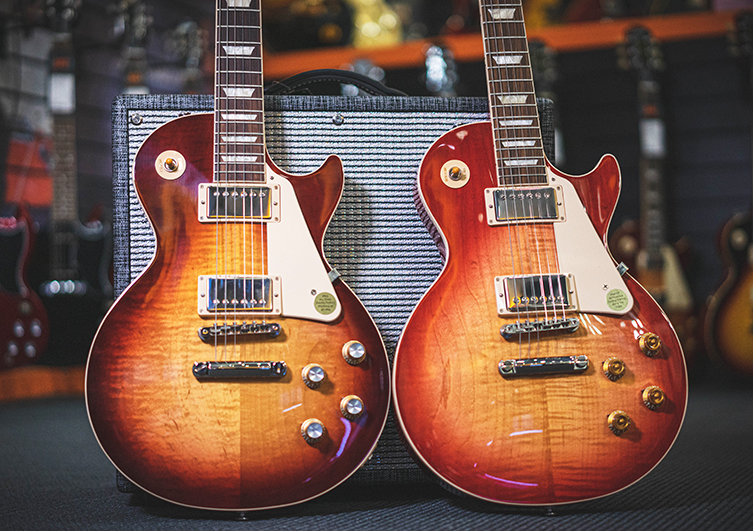
Why? That’s a fairly easy answer. Les Pauls look beautiful, sound huge and are particularly easy to play. Not only that, they have been seen in the fans of most classic rock gods, from Jimmy Page and Slash to Joe Perry and Mick Ronson. Even throughout the hair metal days and grunge era, Gibson’s finest was never far away.
Today, there are plenty of choices for those seeking that mythical power of the Les Paul. The most obvious choice would be the Gibson Les Paul Standard, which is currently available with a chunkier 50s neck or a slightly skinnier 60s version. A myriad of Burst finishes are offered as well as the classic goldtop from the model’s early days.
Well-heeled rockers should check out the incredible work being done by the Gibson Custom Shop Murphy Lab. These are completely convincing, absolutely authentic replicas of vintage Gibsons, aged to perfection for a look and feel that is unsurpassed. The eternally lusted after 1959 Les Paul Standard is a great place to begin understanding what the Gibson Custom Shop - and indeed the Murphy Lab - are all about.
A slightly more affordable take on the theme is the Gibson Les Paul Studio. Still made in Nashville, and still featuring a nitrocellulose finish (it ain’t a Gibson otherwise), the Studio dispenses with things like binding and figured tops to create a more stripped-back aesthetic. Weight-relief chambers make this one a hit for gigging guitarists, especially since the 498 and 490 humbuckers are famously thick sounding.
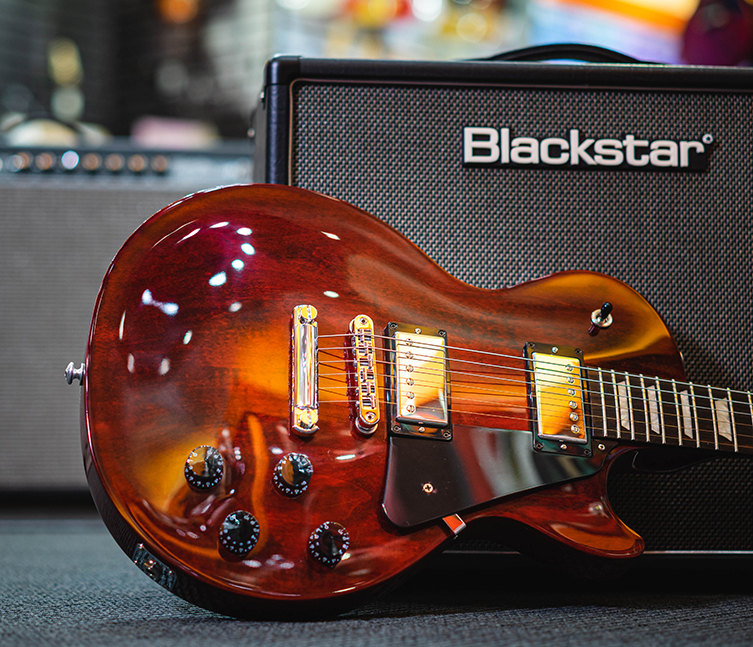
Each of these choices will bring you an energetic, large rock tone, with a guitar that is exceptionally easy to play and famously beautiful.
Best Guitar for Indie and Alternative Music
Again, there was a fairly clear winner in this category too, which may be surprising when you consider that ‘Alternative’ and ‘Indie’ (it once meant ‘independent’ a looong time ago) genres are supposedly all about bucking trends and being individual! In the end, we all do tend to follow the example of others, we suppose, and in this respect, Indie music is no different.
Some of the guitars mentioned in relation to Indie and alternative music included semi acoustics from Epiphone (the Casino and the Sheraton in particular), as well as the omnipresent Fender Telecaster, but there was a clear consensus, and it was for this guitar…
The Fender Jazzmaster. Realistically, what else could it have been? The Jazzmaster is the slightly edgier sibling of both the ultra-mainstream Stratocaster and the perhaps-too-niche Jaguar. The Jazzmaster answers the need for a somewhat iconoclastic guitar with its offset body and unusual switching, but still keeps plenty of brand recognition for those who enjoy the vibe and status of Fender, who after all are the largest guitar brand on the planet.
When choosing a Jazzmaster model, we’d recommend beginning with the Fender American Vintage II range. These, to our minds, are the most satisfying in terms of features. We want the proper switching to give us the rhythm and lead circuits, and we want the tremolo to operate in it’s inimitable way so that we can perform all of our favourite Kevin Shields ‘glide guitar’ moments. The Fender American Vintage II Jazzmaster gives us all of this, plus block inlays, a matching headstock and a bound fingerboard that’s made from a rounded piece of rosewood, just like they did in the 60s!
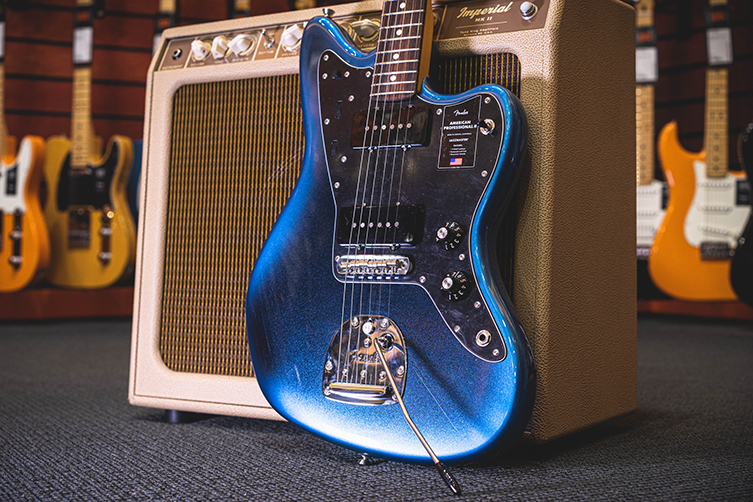
If you love the vibe of a Jazzmaster but perhaps needs a little more modernity involved, you might love the Fender American Pro II Jazzmaster. This model keeps most of the idiosyncrasies that offset fans want to see, but certain details have been given a contemporary sprucing. For one thing, the tremolo (called the Panorama on this particular model) looks like a typical Jazzmaster unit but behaves far more like a Strat tremolo, so you’ll get much more travel, even almost into divebomb territory! The fingerboard has also been flattened ever so slightly into a Fender-standard 9.5”, which is generally agreed to be an easier surface for soloing. Try both!
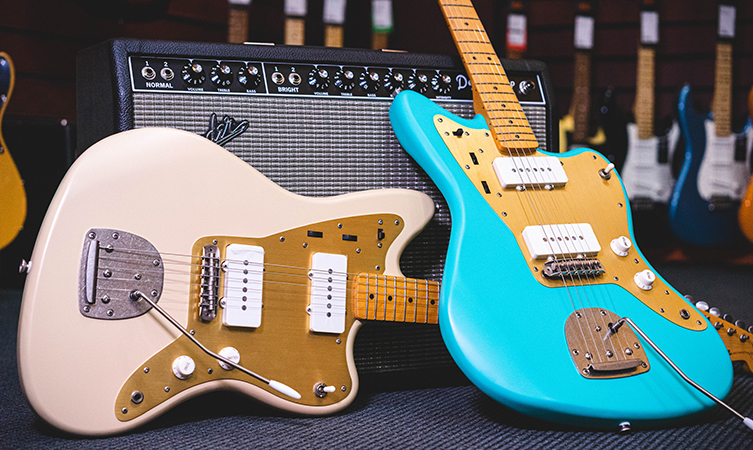
If both of these options sit on the expensive side for you, fear not! You can still be a part of the fun by choosing the quite-excellent Squier Classic Vibe Jazzmaster. Bringing surprising levels of authenticity to a price point that’s less than a third of what we just looked at, this affordable axe is a no-brainer for those on a tight budget. Whilst we’d say that it’s silly to compare a budget guitar to a largely hand-made USA guitar, this Squier succeeds on its own terms, not to mention its own merits.
Best Guitar for Metal
Metal is a style of playing that requires certain specifics. Even though there are endless subgenres of metal, each of them requires a guitar sound that is high output and tight for precise rhythm playing. On top of that, many (though by no means all) metal styles use technically elaborate solos and harmony parts, so ‘performance’ features like slim necks and big frets are generally preferred.
Now, given that metal is one of the most guitar-centric genres out there, you can quite correctly assume that there are an absolute boatload of metal-style guitars out there to cater to the market. Several legendary brands focus almost entirely on the production of ‘heavy guitars’: Jackson, Schecter, Mayones, Solar and ESP all qualify as heavy hitters in the metal game.
One brand, though, stands proud, for its decades of pioneering, unstinting greatness in the area of metal. That brand would be Ibanez. The Japanese giant have consistently been a top seller, and they have more than a few modern day classic guitars in their roster.
Indeed, one of their most popular models is the RG, which stands for Rock Guitar. What more do you need to know?
Okay, maybe we do need to say a little more! So, the RG came about after Steve Vai collaborated with Ibanez on his JEM guitars. The RG did away with the Tree of Life inlay and monkey grip handle, but kept the sharpened S-style outline, high output pickups and super speedy neck. This was back in the 1980s, and Ibanez have consistently expanded and updated their catalogue of RG guitars since, in order to keep up with varying player needs. We know fine well that these guitars rock hard, but which ones would we recommend? There are so many!
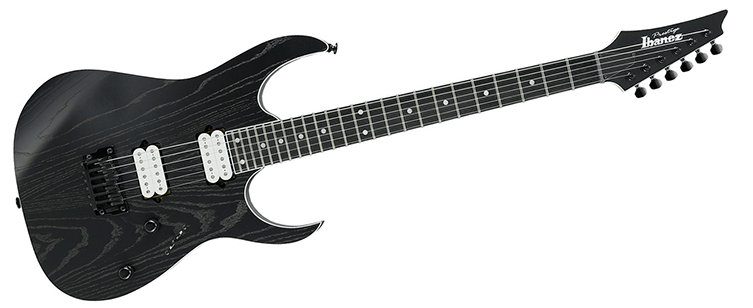
Indeed, so let’s start with a model that we’ve seen on a lot of stages recently. The Ibanez Prestige RGR652AHBF is our choice. It may not have the catchiest name, but it more than makes up for that in style, performance and sound. From the weathered black ash body to the reverse headstock, it’s clear that this Ibanez means business! White binding around the body, ebony fingerboard and headstock contrasts brilliantly with the black finish, and indeed the white DiMarzio Fusion Edge pickups. DiMarzio genuinely make some of the best sounding pickups in the business, and these particular models are set to stun. On a guitar like this, with its 24 jumbo frets and skinny neck, that’s a licence to make extreme noise!
Ibanez Prestige refers to their higher-end Japanese made instruments. Prestige instruments are pretty exceptional across the board, so if you need a tremolo (we opted for a hardtail model here), then make sure you check out the range.
Ibanez make another, even more metal-centric range called the Iron Label. Iron Label guitars are for contemporary heavy styles, and so another RG option for you could be the Ibanez Iron Label RGIXL7. This is in some respects a very similar guitar to the RG we just looked at, and that’s partly why we’ve chosen this one. Ibanez have refined their models pretty thoroughly, tweaking them just so for different playing preferences.
This particular model retains the reverse headstock and hardtail design, but stretches the scale length from 25.5” to the baritone-friendly 27”, in order to incorporate that extra 7th string! The ebony fingerboard also remains, as does a 7 string version of those superb DiMarzio pickups, proving just how right Ibanez was in choosing those models initially!
Whilst 7 string guitars are obviously not for everyone, they are a perfectly normal sight in contemporary metal, and we recommend hard rockers to consider having at least one in their collection.
Best Guitar for Blues
Blues is quite a tricky one to choose a guitar for. Why? Well, because of all the genres of music out there, none quite have the same hero-worshipping situation as blues music. Consider how people feel about players like Stevie Ray Vaughan, Eric Clapton and BB King and you’ll start to see what we mean! Add to that more current blues (or blues-adjacent) artists like John Mayer and Joe Bonamassa, and there’s a real personality cult thing happening, perhaps more so than in rock circles. So many blues front people are also guitarists, aso many there’s more of a focus on the guitar playing aspect? Who knows, but people really analyse the playing and gear of blues players.
This means that choosing a guitar for blues depends very much on whose type of blues music you prefer. Also add in the premise that, compared to other guitar styles, blues really can be played on any electric guitar, then it makes things much less cut and dried than with, say, metal.
When discussing guitar choices for blues, some staff members thought the Gibson ES-335 was the best choice. This is indeed a highly popular blues choice, but then others mentioned the Les Paul, for equally obvious reasons (loads of noted blues players love using Les Pauls for the big tone and long sustain). But our final choice went a little like this: which guitar is favoured by Jimi Hendrix, SRV, Clapton, Robert Cray, Kenny Wayne Shepherd, Rory Gallagher, Buddy Guy, Bonnie Raitt and John Mayer?
You guessed it: it’s the Fender Stratocaster. Yes, you can play the blues on any guitar you like (we’ll come back to this theme later), but when so many of the world’s most significant blues players reach for a Strat, so should you.
Excellent, glad to have sorted that out. But which Strat? Stratocasters are available at most of the major price points, and if there isn't a Fender in your budget, a Squier Classic Vibe guitar may well fit your needs perfectly. That said, the Fender Player Stratocaster is a great buy in any context, with alnico pickups that are much upgraded from the previous iteration of Mexico-made Fenders.
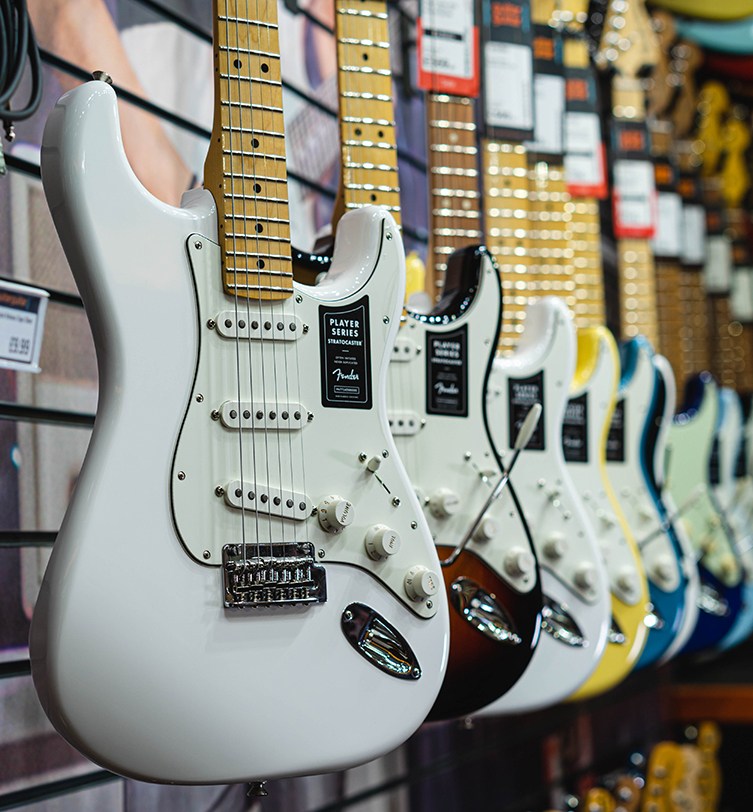
For even more authentic vintage Strat vibes, we’d recommend looking at both the Vintera 60s Strat and the American Vintage II 1961 Strat. Olympic White is a classic blues colour (plus you get instant ‘Jimi at Woodstock’ vibes), and the pau ferro/rosewood fingerboard seems to be the choice for most lead players, perhaps since those fingerboards impart slightly more sonorous midrange frequencies than maple?
Best Guitar for Jazz
Jazz is a genre where tradition is as seemingly important as innovation. Overwhelmingly, jazz players prefer hollow bodies and humbuckers for those warm, strong tones. Despite its name, the Fender Jazzmaster is used by precisely no notable jazz guitarists, and the Les Paul - designed by innovative jazz player Les Paul - is a hard rock favourite but a jazz no-no. It’s just how it is, folks!
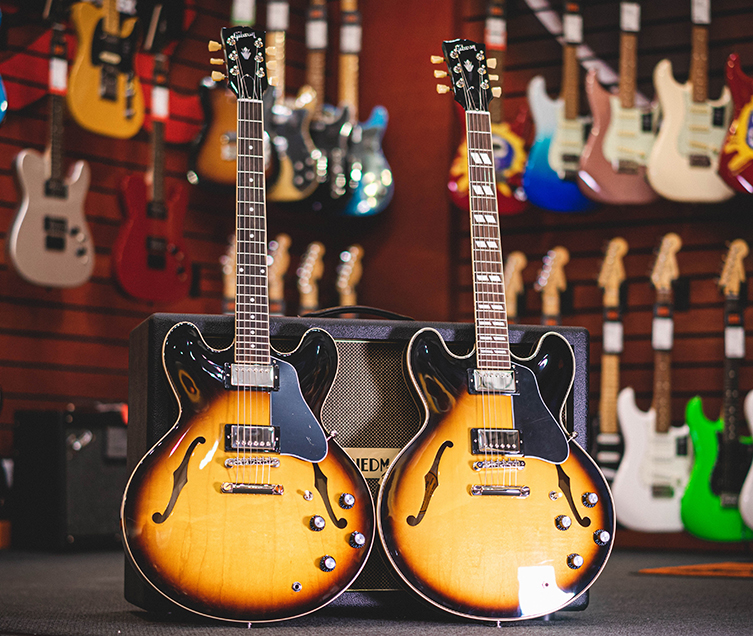
So what is the best guitar to play jazz on? Well, brands like Gibson and Ibanez are obvious choices. Historically, the ES-175 was regularly used for jazz, but Gibson actually don’t often offer this model nowadays, so we’d recommend going for their massively versatile ES-335 model. It has a solid centre block, so it’s not entirely hollow, but you’ll get a warm, sustaining tone from it for sure. Not only that, the 335 (and other brands’ copycat models) is used by top jazzers such as Larry Carlton and John Scotfield, so you’ll be able to summon those lovely woolly jazz tones easily.
The Ibanez Artcore range of guitars are supremely affordable and also look & Perform way above their price point. The range is relatively diverse, so do make sure you get familiar with the model variations, but we'd say it would be hard to beat the Ibanez Artcore and AF models for traditional hollow body jazz smoothness and timeless style.
Is there one guitar that can pull off every style of music without undue compromise? Is there one design that is capable of getting you through a varied set’s worth of songs?
Well, yes there is, actually! But before we get to that, let’s address one of our earliest queries: can you use a guitar for any genre?
And the answer is: of course you can. There are no rules out there in guitar land: if you want to play blues on an Ibanez Iron Label guitar, you go ahead and do it! By the same token, if you want to play sludge metal on a hollow body Gretsch, then that is exactly what you should do! You may achieve different results from what you may expect, but it’s not as if your rig will explode in outrage! Whatever you have, you can make it work if you need to. That said, we hope we’ve highlighted the fact that certain styles, builds and features can make playing certain styles much easier or more effective.
So, with that all in mind, what type of guitar would we consider to be a great all-rounder?

Two obvious answers spring to mind, so we’ll be oblique and offer you three options! First up, we think an HSS Strat handles almost all jobs excellently, from the lightest and prettiest sounds to the crunchiest and chunkiest. HSS just refers to the pickup configuration: a regular Strat has three single coils (SSS) and so an HSS model adds a humbucker at the bridge position. Strats are already extremely versatile, so putting a slightly thicker and hotter pickup at the bridge allows you to tackle all of the harder, louder sounds that a typical Strat can underperform with. Rock, punk, blues, shred, grunge…an HSS pickup layout just gives you that little extra bump when you need it.
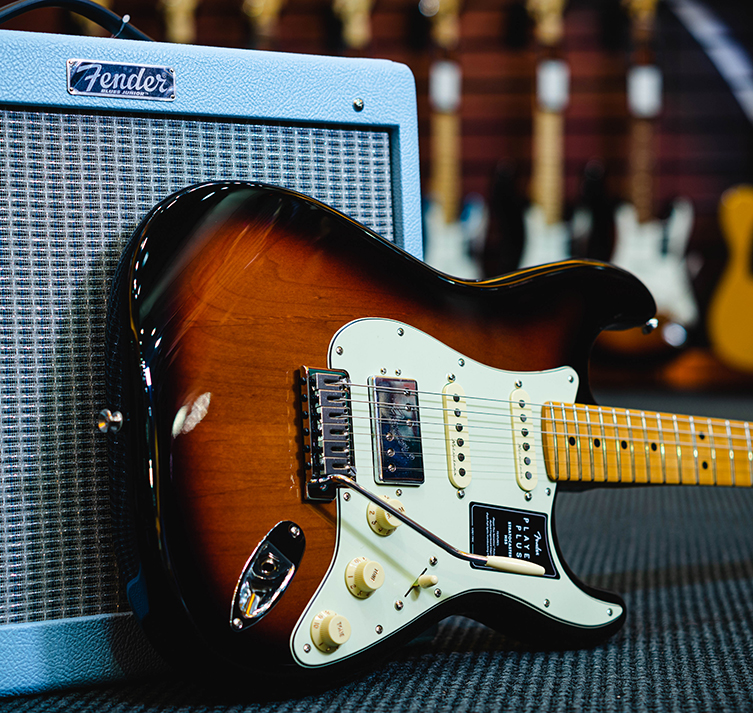
You’ll find a great many HSS Stratocasters out there, again to meet every price point. The Fender Player Plus Stratocaster HSS is a great choice, as it adds noiseless pickups, locking tuners and a versatile 12” radius fingerboard and rolled edges for a modern, comfy feel.
Moving into a slightly more ‘hot-rodded’ lane, we’d also recommend checking out what Charvel are up to in this area. The Charvel DK24 series of guitars is what we’d focus on here. They are offered with two humbuckers (HH), the same HSS configuration we looked at with the Strat, and also a slightly more hard rockin’ H-S-H, with a single coil pickup sat between two humbuckers. Talk about versatility?
Charvel guitars are famously innovative, and the DK24 models are no exception. Graphite rods inside the neck for strength, locking tuners, proper Seymour Duncan pickups and cool touches like an inverted input jack on the back/side to encourage your cable to keep away from your feet! A high quality Gotoh 510 tremolo bridge allows a great degree of expression without the need to lock up your strings a la Floyd Rose, so that allows more immediate flexibility too. In short, we find these guitars to be very impressive indeed, and recommend them wholeheartedly.
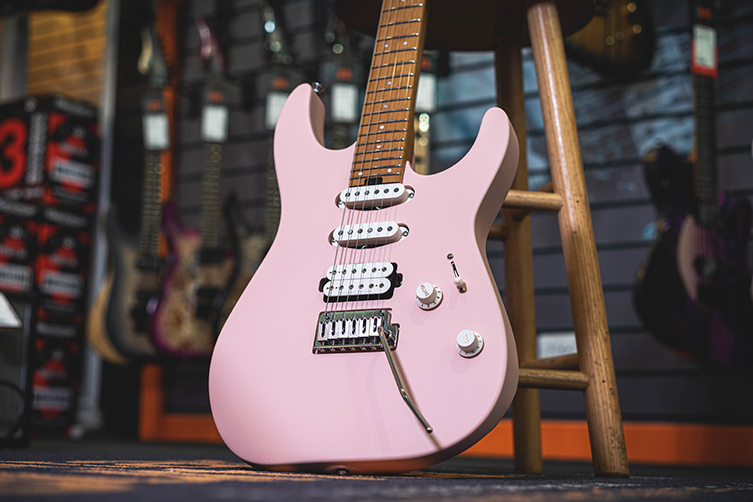
One final recommendation for you would be the PRS Custom 24. Whether you stretch for a USA-made PRS or indeed one of the affordable SE models, you’ll be getting probably the only really successful merging of the Gibson and Fender worlds that guitar design has seen. Paul Reed Smith’s Custom 24 is an acknowledged classic today, and players from all walks of life seem to be able to get on with them equally.
The PRS Custom 24 is a beautiful guitar, not to mention innovative. How? Well, things like the scale length (25”, so right between Fender and Gibson), a 10” fingerboard radius (again, right between the big boys) and a full on humbucker and mahogany sound that successfully switches down to some sweeter single coil sounds means that you’ll be playing comfortably and sounding exceptional no matter what you do. The PRS tremolo design is famous for working well without the need for a locking nut, and the double cutaway design borrows from the big brands whilst somewhat redefining both. Far from a mish-mash of influences, the PRS Custom 24 often feels more like the next step in guitar playing. If you can afford a Maryland-made Custom 24, then you owe it to yourself to demo a few favourites next time you visit us. If those are beyond your grasp, know that the SE models are good enough for the likes of Joe Walsh and John Mayer, and follow their example!
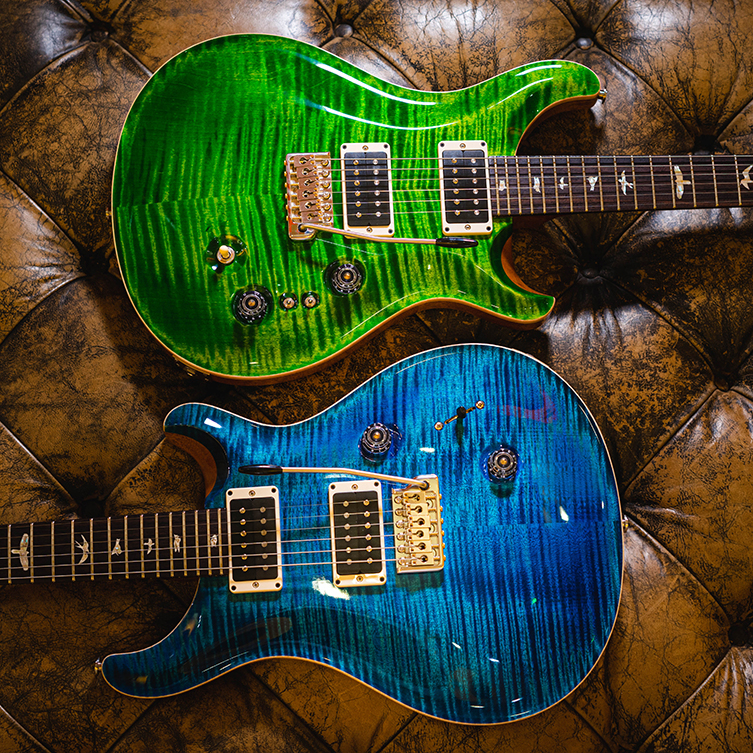
Best Guitar for Folk
The majority of this blog has concerned itself with electric guitars, but for folk music, it seems like the only true choice is an acoustic. Not only an acoustic, but a very particular acoustic!
Nowadays, the term ‘folk guitar’ is recognised throughout the industry as being an acoustic guitar with a slightly smaller body than a dreadnought, and with a somewhat narrower waist.
This compact acoustic design has a reputation for being more intimate than larger and louder acoustics such as the dreadnought or the jumbo. With less of a body to project sound, the folk styles instead seem to work well with fingerstyle techniques, though there’s hardly a problem with strumming one, either!
Arguably, the most well regarded folk style would be Martin’s orchestral body style, and the OM and 000 (or triple-oh) styles in particular.
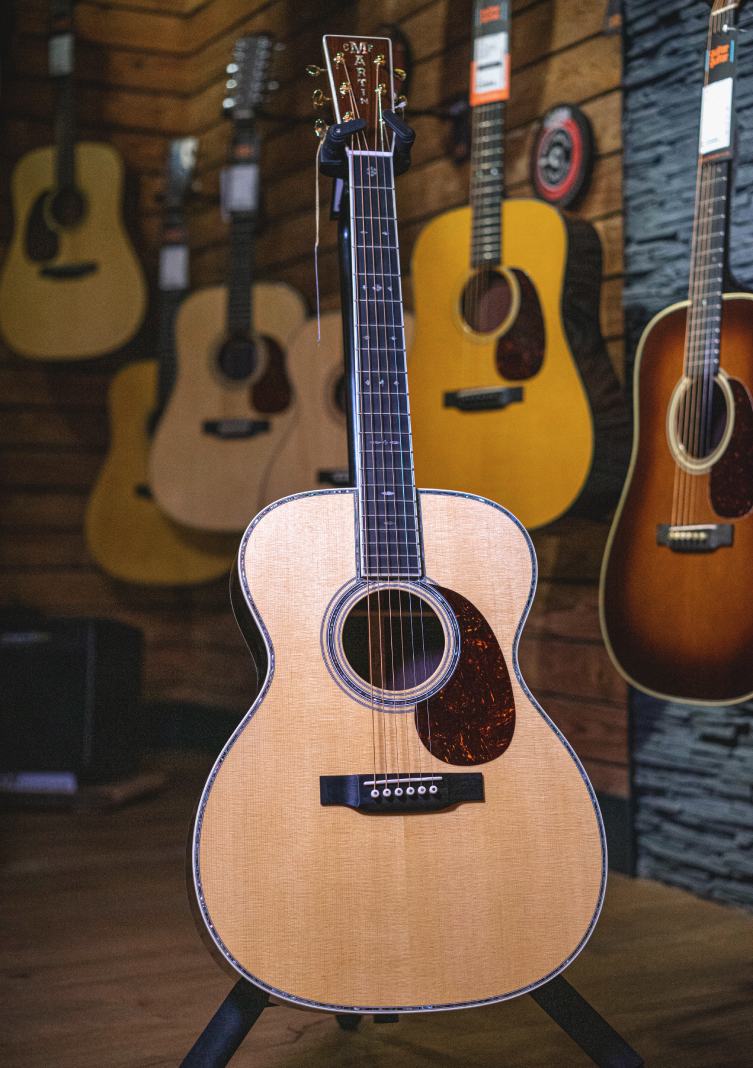
Why? Well, you’ll see many of the world’s most influential folk-based players using this style to make some extremely famous music. How is this for a list of Martin Orchestral users?
- Bob Dylan
- Woody Guthrie
- Joan Baez
- Paul Simon
That’s just to name a few, as well! It’s true that most acoustic players will chop and change their preferences (Dylan loves an SJ-200 as well, which is almost at the opposite end of the spectrum!), but you see the OM/000 being utilised very often.
There actually isn’t a huge difference between the OM and the 000, but the difference that exists is reasonably significant: the scale length of the 000 is slightly shorter at 24.9”, compared with the OM’s more regular 25.4”. Not exactly a titanic difference, but try both back to back and you’ll notice how the feel changes!
Best Guitar for Punk
Punk, as a lifestyle/aesthetic would lead one to think that the last thing that matters is which guitar is being played: an attitude of slightly hostile indifference is often required, so it wouldn’t do to seem too picky about guitar choices!

It’s also true to say that if I were to pick a few punk-rock guitar players at random, they’d all have pretty different guitar choices. Well, let me do just that:
- Tim Armstrong (Rancid) - Gretsch Country Club (it’s what his signature guitar is based on)
- Billie Joe Armstrong (Green Day) - Gibson Les Paul Junior (Fernandes Strat during early years)
- Steve Jones (Sex Pistols) - Gibson Les Paul Custom
- Joe Strummer (The Clash) - Fender Telecaster
- Tom Delonge (Blink 182) - Strat with single humbucker or custom Fender Starcaster
So, there you have it. Something loud that looks cool is pretty much what you’re after. I feel tempted to just say Gibson Les Paul Custom for this genre, because Mick Jones from the Clash often used one too. They are pretty expensive though - which isn’t very ‘punk’ - so, after considering what other punk-adjacent bands use, I reckon the top choice is the Epiphone Les Paul Custom. It’s largely the same vibe, with a similar sound, and its relative affordability makes a big tick on the Punk-o-meter, too.

Best Guitar For Country
Country music is all about tradition. Even in 2025, when many stars like Taylor Swift have taken their music relatively outside its original country roots, the majority of country musicians adhere to genre conventions. It's part of the world they work in, and it’s an important part of the fandom, too: Stetson hats, cowboy boots, pickup trucks…and Fender Telecasters.
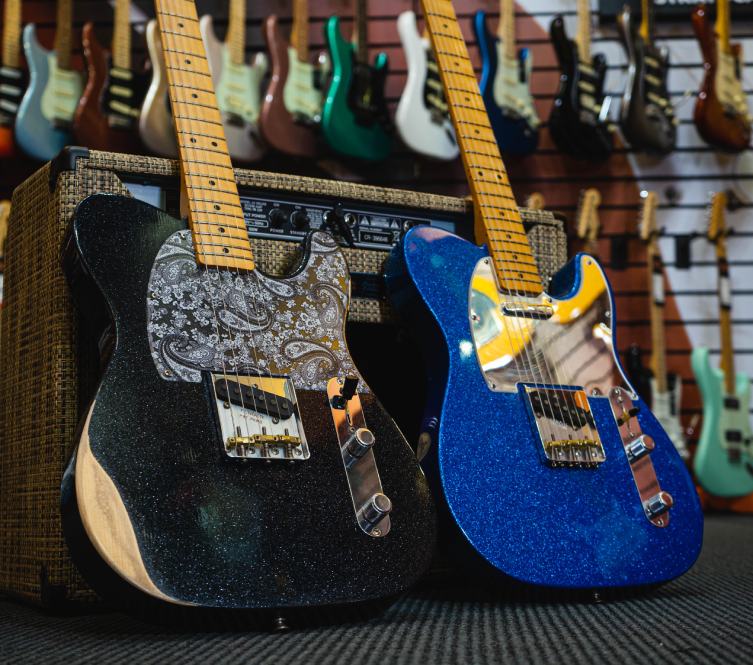
Yes, there is no substitute here. If you want to play country music authentically, it needs to be on Fender’s firstborn child. Some will say that a Strat will do an equally good job, but those people have no horse-sense: it’s a Tele all the way,and here's a list of Tele-twanging country guitarists to prove it:
- Merle Haggard
- Buck Owens
- James Burton
- Brent Mason
- Danny Gatton
- Keith Urban
- Brad Paisley
What is the Best Guitar for Me?
What is the best guitar for you? Well, that’s the eternal question. Our experience indicates that the best guitar for you is probably at least a couple of different models. We are all complex creatures and like different things at different times. As much as an HSS Strat or PRS Custom 24 will cover most any musical situation you find yourself in, you may just really really want a Telecaster for a certain gig, or an ESP Eclipse for a hard rock or metal show that requires a certain look. It’s all relevant, it’s all important and it’s all totally fine! We’ll leave you with the wise words of Robin Finck, two-time Rock n Roll Hall of Fame inductee and guitarist for Nine in Nails (and formerly Cirque du Soleil and Guns n Roses):
‘My favourite guitar is whichever one I’m holding in my hands’.
You do you, and we’ll see you next time you’re in!





